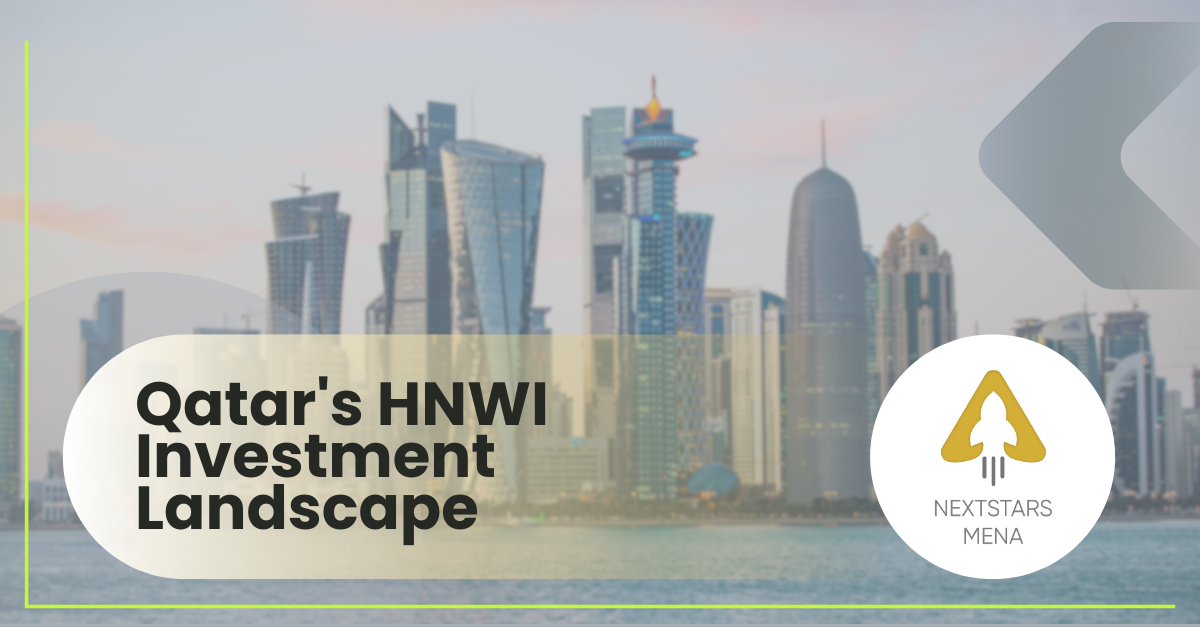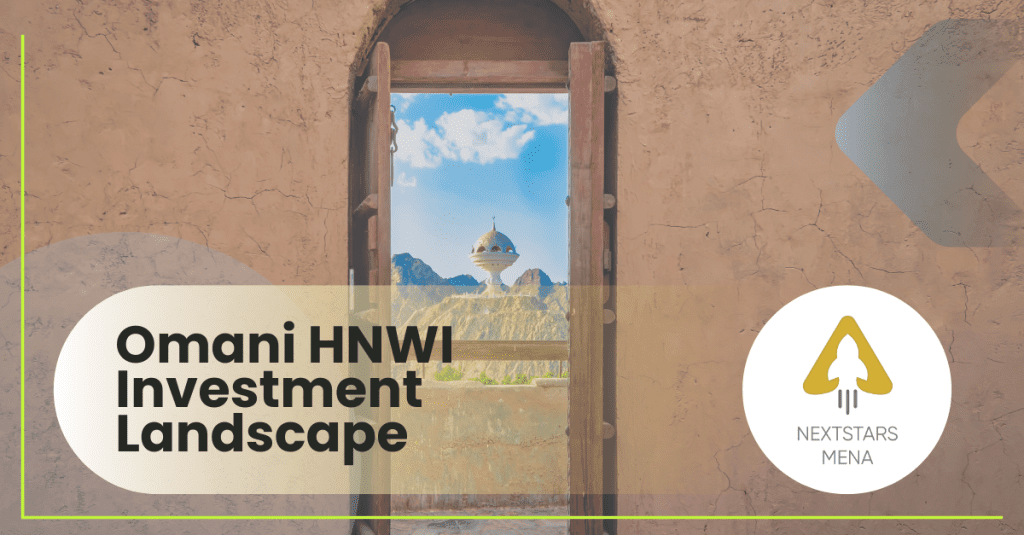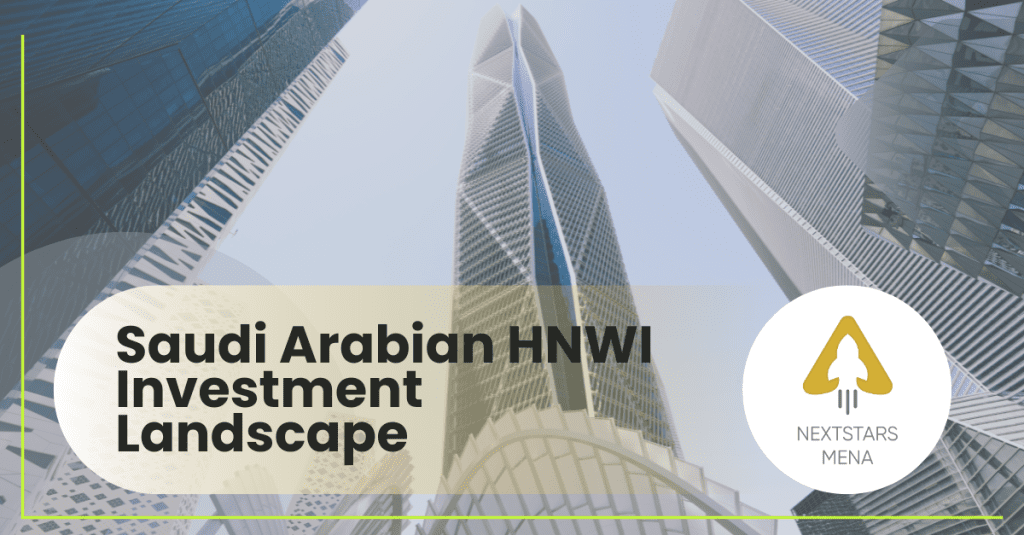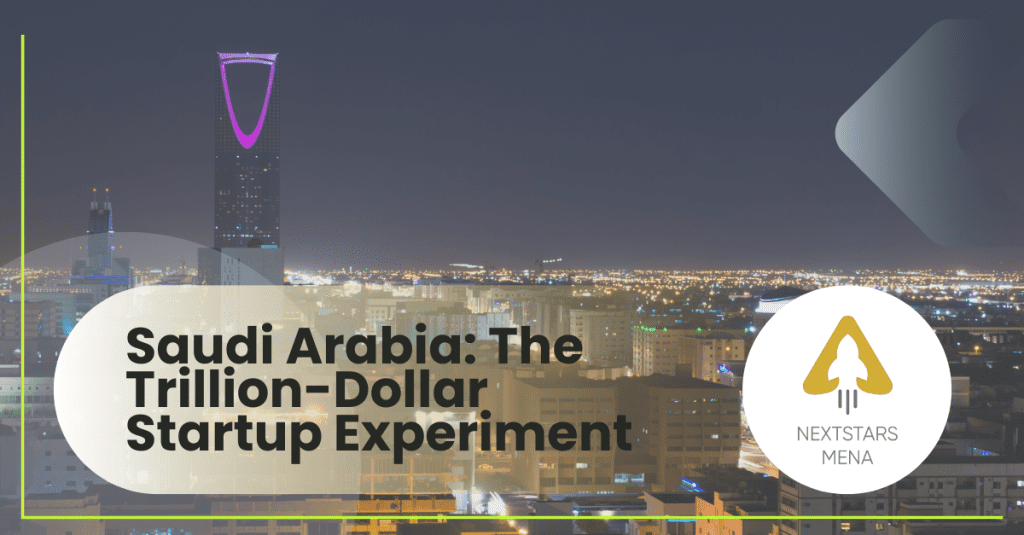1. Introduction
Qatar stands as a testament to strategic economic transformation, evolving from a small Persian Gulf state into one of the world’s wealthiest nations per capita. With its National Vision 2030 driving comprehensive economic diversification beyond natural gas dependency, Qatar’s high net worth individuals (HNWIs) and its sovereign wealth fund are reshaping global investment patterns while creating unique opportunities for international partnerships, particularly with Canada. An emerging trend among these strategic investors is the role of the Angel Investor, who actively seeks out promising startups worldwide.
The nation’s investment landscape represents more than capital deployment; it embodies a strategic vision for sustainable growth, innovation, and global influence. For organizations like NextStars, understanding Qatar’s investment ecosystem opens pathways to meaningful collaboration in building climate conscious, globally scalable enterprises that bridge continents.
This report examines Qatar’s HNWI investment patterns, the strategic role of the Qatar Investment Authority, and the emerging Canada connection that presents exceptional opportunities for bilateral innovation and growth.
2. Qatar’s HNWI Statistics and Wealth Evolution
Current Wealth Concentration
Qatar has experienced remarkable wealth accumulation, establishing itself as one of the world’s richest nations per capita. The country currently hosts approximately 39,000 HNWIs, representing a staggering 300% growth since 2000, the fastest growth rate in the Middle East region. This positions Qatar fourth in the Gulf region after the UAE (72,100 HNWIs), Saudi Arabia (59,000), and Kuwait (38,900).
The ultra high net worth segment continues to expand, with projections indicating Qatar will host 52,700 HNWIs by the mid 2030s, growing from the current base of 39,000. This represents an expected 35% growth rate, reflecting sustained wealth creation despite global economic volatility and energy price fluctuations.
Wealth Management Evolution
Qatar’s wealth management landscape differs fundamentally from traditional family office structures seen in other Gulf states. The Qatar Investment Authority (QIA), established in 2005, functions as both a sovereign wealth fund and effectively operates like a sophisticated family office for the nation, managing over $557 billion in assets as of 2025.
Key characteristics of Qatar’s wealth management approach include:
Centralized Structure: Unlike Saudi Arabia’s distributed family office model, Qatar concentrates wealth management through the QIA and related government entities. The fund operates with a small, highly skilled team described by industry insiders as “a very, very small shop” run like a family office.
Strategic Leadership: The QIA’s recent appointment of Mohammed Al Sowaidi as CEO, who previously led the Americas region, signals Qatar’s focus on Western markets, particularly anticipating dynamics of evolving global trade relationships. His extensive US experience positions Qatar to navigate international investment opportunities strategically.
Institutional Sophistication: Despite its concentrated structure, Qatar demonstrates remarkable investment sophistication. The QIA is a founding member of the International Forum of Sovereign Wealth Funds and helped draft the Santiago Principles, establishing global best practices for sovereign wealth management.
Next Generation Wealth Transfer: Like other Gulf states, Qatar faces the challenge of transferring more than $18 trillion to the next generation by 2030. This generational shift drives increased interest in technology, sustainability, and alternative investments beyond traditional real estate holdings.
3. Investment Patterns: Domestic and International
Domestic Investment Focus
Qatar channels significant capital into National Vision 2030 aligned sectors:
Technology and Innovation: Qatar’s venture capital ecosystem raised QAR 46 million in fintech alone in 2024, the highest across all sectors. The country launched its first venture capital “Fund of Funds” worth $1 billion to boost regional and international venture capital funds.
Infrastructure Development: Major projects include the Qatar Science & Technology Park, Qatar Financial Centre Innovation Dome, Media City partnerships with Microsoft, and the Digital Assets Lab initiative supporting digital commerce research.
Economic Diversification: Through the Third National Development Strategy (NDS3), Qatar prioritizes competitiveness, innovation, and institutional excellence. Focus areas include ICT, financial services, education, healthcare, and sustainable development.
Startup Ecosystem Development: With 377 operating ventures, 22 incubators and accelerators, and 15 co working spaces, Qatar has built comprehensive startup infrastructure. The ecosystem ranks 3rd in the Arab world and 8th globally for entrepreneurship.
International Investment Strategy
Qatar’s global investment approach demonstrates strategic sophistication:
Geographic Distribution: The QIA manages a $557 billion portfolio spanning North America, Europe, and Asia Pacific. US investments alone exceed $30 billion, with plans to reach $45 billion. The fund holds $78 billion in publicly disclosed holdings including stakes in Iberdrola, Glencore, Siemens, and Volkswagen.
Sector Focus: International investments concentrate on:
- Technology and AI (recent investments in xAI, Databricks, Instabase)
- Real estate (Empire State Building stake, Asia Square towers in Singapore)
- Financial services (Credit Suisse, various European banks)
- Sports and entertainment (Paris Saint Germain, BeIN Media, Miramax Studios)
Strategic Partnerships: Recent high profile investments include participation in AI platform Cresta’s $125 million funding round, a 10% stake in ChinaAMC, and co investments with global technology leaders.
4. Investment Trends and Future Direction
Emerging Priorities
Artificial Intelligence: Qatar positions itself as a regional AI hub, with the QIA leading investments in xAI’s funding rounds, Cresta’s AI platform, and data company Databricks. The national Digital Agenda 2030 prioritizes AI across government services and economic sectors.
Fintech Revolution: The Qatar Fintech Strategy 2023 drives sector growth, with fintech securing the highest venture investment across all sectors in 2024. The Qatar Central Bank operates a regulatory sandbox while the QFC’s Fintech Circle provides ecosystem support.
Sustainable Development: Aligning with ESG principles, Qatar invests in climate technology, renewable energy, and sustainable infrastructure. The QIA periodically reviews its Sustainable Investing approach to align with evolving global norms and Qatar’s national goals.
DeepTech and Innovation: Focus areas include AgriTech, DeepTech, and biotechnology, identified as underdeveloped sectors with high growth potential requiring targeted investment support.
Investment Philosophy
Qatar’s investment approach distinguishes itself through:
Patient Capital with Purpose: The QIA takes long term positions in strategic assets, viewing investments “almost like art” according to developers familiar with their approach. The Plaza Hotel acquisition exemplifies this philosophy: despite losses, it represents irreplaceable value.
Strategic Alignment: Investment decisions align with national development objectives, supporting economic diversification while maintaining financial returns. The fund balances domestic development with international portfolio growth.
Concentrated Excellence: Rather than dispersed family offices, Qatar’s centralized approach enables coordinated strategic deployment of capital, rapid decision making, and alignment with national priorities.
5. Canada Connection: Strategic Investment Rationale
Bilateral Economic Foundation
Canada and Qatar maintain strong and progressively expanding economic ties celebrating 50 years of diplomatic relations in 2024. The relationship encompasses:
Trade Growth: Bilateral merchandise trade reached $325 million in 2024, with Canadian exports valued at $159 million including industrial machinery, electronic equipment, aircraft parts, and agricultural products. Trade volume surged to QR 1.358 billion in 2023 from QR 620 million in 2021, demonstrating rapid growth.
Institutional Framework: The 2024 Memorandum of Understanding on bilateral political consultations, expanded Air Transit Agreement, and MOU on social and economic development cooperation create structured pathways for enhanced collaboration.
Investment Flows: Qatar’s FDI stock in Canada reached nearly $300 million by 2024, growing at 17% annually. The QIA’s September 2025 acquisition of a 4% stake in Ivanhoe Mines signals continued interest in Canadian resources and technology.
Canadian Investment Advantages for Qatari HNWIs
Technology Leadership
Canada offers Qatar access to world class innovation ecosystems:
AI and Digital Innovation: Montreal, Toronto, and Waterloo host leading AI research centers and technology hubs. The Canadian Qatari Business Forum identifies AI as a primary attractive niche for bilateral investment, particularly in healthcare and education applications.
Clean Technology: Canadian expertise in cleantech aligns with Qatar’s sustainability goals. Solar technologies, water treatment, and renewable energy represent key areas for technology transfer and joint ventures.
Fintech Innovation: Toronto’s position as a global financial center combined with innovative fintech companies provides Qatar with exposure to financial technology evolution supporting its own fintech strategy.
Strategic Sectors Alignment
Energy Transition: Qatar’s position as the world’s second largest LNG exporter creates natural synergies with Canadian energy technology. QatarEnergy’s successful bid for Parcel 8 in Newfoundland’s Orphan Basin demonstrates active engagement in Canadian energy markets.
Natural Resources: Canada’s vast natural resources including minerals, forestry, and agricultural products offer Qatar diversification opportunities. Both nations share interests in agricultural security and resource development.
Education and Healthcare: The University of Calgary Qatar offers nursing programs while Canadian health technology companies contribute to Qatar’s healthcare transformation. These sectors represent continued collaboration opportunities.
Ecosystem Advantages
Stable Investment Environment: Canada’s G8 membership, OECD participation, and stable political system provide Qatar with secure investment opportunities in developed markets.
Innovation Infrastructure: Canadian technology hubs in Montreal, Toronto, Kitchener Waterloo, Calgary, Edmonton, and Vancouver offer diverse innovation ecosystems for Qatari investment.
Cultural Connections: Approximately 10,000 Canadian expatriates in Qatar contribute across technology, oil and gas, healthcare, education, and clean technology sectors, creating natural bridges for business development.
Investment Structures and Opportunities
Direct Investment: Qatar can establish presence through the planned Canadian trade office and leverage the Canadian Qatari Business Forum based in Toronto for deal sourcing and partnership development.
Sector Specific Ventures: Priority sectors identified include:
- Agriculture and food security
- Hydrotechnology and water treatment
- Defense and security systems
- Information and communications technology
- Life sciences and biotechnology
- Oil and gas technology
Joint Development Projects: Opportunities for co investment in both countries’ major projects, from Qatar’s giga projects to Canadian resource development and technology commercialization.
6. Innovation Exchange: Inbound and Outbound Opportunities
Inbound Innovation to Qatar
Qatar’s transformation creates demand for Canadian innovation:
Technology Transfer Opportunities: Canadian companies can leverage Qatar’s business friendly environment with incentives for international businesses. The Qatar Financial Centre, Qatar Science & Technology Park, and Free Zones offer 100% foreign ownership and tax advantages.
Sector Specific Demand:
- Smart City Solutions: TASMU Smart Qatar initiative requires IoT, urban planning, and sustainable infrastructure expertise
- Digital Government: E governance platforms, citizen services, and digital transformation solutions
- Healthcare Technology: Telemedicine, AI driven diagnostics, and healthcare management systems
- Education Technology: Online learning platforms supporting Qatar’s education cluster development
Market Access: Qatar provides gateway access to 25 economies worth $6 trillion in combined GDP within 3,000 km, offering Canadian companies regional expansion opportunities.
Outbound Innovation from Qatar
Qatari capital enhances Canadian innovation capacity:
Growth Capital: The QIA’s patient capital approach suits Canadian deep technology companies requiring extended development periods. Unlike traditional VC focus on exits, Qatar takes strategic long term positions.
Market Entry Support: Qatar facilitates Middle East market entry for Canadian companies through:
- Access to GCC markets representing 60 million consumers
- Government relations and regulatory support
- Regional partnership networks
- Sector expertise in energy, logistics, and infrastructure
Strategic Resources: Beyond capital, Qatar offers:
- Pilot opportunities in major development projects
- Access to world class events (World Cup infrastructure legacy)
- Connection to Islamic finance markets
- Sovereign backing for scale up ventures
Bilateral Innovation Ecosystem
The convergence of Qatari capital and Canadian innovation creates unique opportunities:
Technology Hubs: The Canadian Qatari Business Forum facilitates connections between business leaders, with plans to bring Qatari investors to Canadian technology hubs across Montreal, Toronto, Calgary, and Vancouver.
Research Collaboration: Joint initiatives between Canadian universities and Qatari institutions, supported by government frameworks, advance breakthrough technologies in priority sectors.
Talent Exchange: With strong educational ties including Canadian curricula schools in Doha and scholarship programs, talent mobility enhances bilateral knowledge transfer.
Investment Corridors: Structured pathways through the CQBF, government MOUs, and institutional partnerships reduce transaction costs and accelerate investment deployment.
7. Strategic Recommendations
For Qatari Investors
- Leverage Canadian Gateway: Utilize the planned Toronto based business forum and Canadian trade office to access North American innovation ecosystems
- Focus on Synergistic Sectors: Prioritize investments in AI, cleantech, agritech, and healthcare where Canadian excellence aligns with Qatar’s National Vision 2030
- Build Strategic Partnerships: Move beyond passive investment to active partnerships leveraging Canadian innovation for Qatari market opportunities
- Support Ecosystem Development: Invest in Canadian incubators and accelerators while facilitating Qatari startup expansion into North American markets
For Canadian Ecosystem
- Understand Qatari Context: Develop understanding of National Vision 2030, Digital Agenda priorities, and Qatar’s concentrated investment approach
- Engage Strategic Channels: Work through established frameworks like CQBF and government channels rather than pursuing dispersed approaches
- Demonstrate Regional Value: Articulate how Canadian solutions address broader GCC market opportunities beyond Qatar
- Create Access Infrastructure: Establish Doha presence or partnerships, develop Arabic resources, and build cultural competency
For Bilateral Development
- Strengthen Frameworks: Expand existing MOUs to cover specific sectors like AI, fintech, and cleantech with dedicated funding mechanisms
- Launch Joint Initiatives: Create bilateral innovation challenges, demonstration projects, and co investment funds targeting priority sectors
- Enhance Talent Mobility: Expand professional recognition, visa facilitation, and exchange programs for entrepreneurs and technical talent
- Build Success Stories: Develop and promote early success cases to demonstrate bilateral value creation and attract broader participation
Conclusion
Qatar’s HNWI investment landscape, concentrated through the sophisticated Qatar Investment Authority, represents a unique opportunity for global innovation ecosystems. With $557 billion under management, strategic focus on technology and sustainability, and active pursuit of international partnerships, Qatar offers patient capital seeking purposeful deployment.
Canada’s combination of innovation excellence, stable investment environment, and growing bilateral ties with Qatar positions it as an ideal partner for this transformation. The convergence of Qatari capital seeking diversification and Canadian innovation requiring scaling creates natural synergies benefiting both nations.
For organizations like NextStars, operating at the intersection of global entrepreneurship and sustainable innovation, the Qatar Canada investment corridor offers exceptional opportunities. By facilitating connections between Qatari investors and Canadian innovators, supporting bilateral entrepreneur development, and building bridges between complementary ecosystems, NextStars can play a pivotal role in this emerging partnership.
The strategic alignment is clear: Qatar’s National Vision 2030 drives economic diversification through technology and innovation. Canada offers world class capabilities in these exact sectors. The institutional frameworks exist, government support is strong, and private sector interest is growing.
As Qatar accelerates its transformation from gas exporter to innovation hub and Canada strengthens its position as a global technology leader, the partnership opportunity is compelling: Qatari capital plus Canadian innovation equals sustainable growth and global impact. With both nations celebrating 50 years of diplomatic relations and embarking on enhanced cooperation, the foundation for transformative partnership has never been stronger.





